Plant species across Australia are under increasing pressure, and it is vital that we limit losses to save wider ecosystems upon which other plants, animals and humans depend.
Saving our endangered native plants Raising Rarity
with the Royal Botanic Gardens Victoria
The Project
FAME is partnering with the Royal Botanic Gardens Victoria to grow their Raising Rarity program. The program will assist in the conservation of rare and threatened Australian wildflower and understorey species by engaging the community and enlisting their help to conserve genetic diversity – in their own gardens
Why we need to act
Plant species across Australia are at a turning point, where the combination of collapsing space and a changing climate are putting more and more species under pressure. Plants make up a huge amount of Earth’s biodiversity, and all life depends on them – whether that is for oxygen, food or shelter.

Threats to the species
On top of land clearing, habitat fragmentation and invasive species, a warming climate across the globe is driving changes in physiological processes, species distributions and ecosystem functions. Shifts in aspects like flowering times, and species abundance, is already being documented here in Australia.

Solution and approach - Stages 1 and 2
Focussing on a species’ horticultural potential, Raising Rarity will introduce target species to cultivation - providing the public an opportunity to grow the plant at home and thus contribute to the ongoing conservation.
There are four main steps as part of this:
Identify threatened species.
Source material from or for Victorian Conservation Seedbank (VCS) collections.
Propagate and grow the plant.
Build and develop five (5) raised garden beds at the Cranbourne site.
Evaluate horticultural performance under nursery conditions and outdoor plots.
The Foundation’s support of the Raising Rarity program will focus on the following outcomes:
Contribute to the ex situ conservation of rare and threatened Victoria taxa
Assess the horticultural potential of rare and threatened Victorian species to select reliable high-quality lines of plants to be introduced into cultivation
Raise awareness of plants under threat, and continue findings to build an overall assessment plan for each species evaluated
Engage the community including ATAI communities, in actively supporting the conservation of rare and threatened Victorian plant species.
Generate revenue to continue to future Victorian plant conservation projects.
This project will include a plant display and interpretation guide, consisting of ten species planted within the Research Plots at the Australian Garden. These include the Button Wrinklewort (Rutidosis leptorhynchoides) - Endangered under EPBC and FFS Acts, and confined to limited areas due to habitat loss - and Snow Pratia (Lobelia gelida) - Vulnerable and known from just a few populations on Mt Buffalo. The latter is also a priority bushfire species.
Ten further species will be trialled within the plots to test their horticultural attributes.
There are clear guidelines around what is looked at before plant species are selected for the program:
The species must be listed under the EPBC Act and/or Flora and Fauna Guarantee Act 1988.
Its horticultural potential: Foliage and flowers.
Available access to seed and cutting material.
Is the plant relatively easy to propagate, with no dormancy issues.
Uniform results across plantings are checked against.
That last point is important, for it marks the primary difference between conservation and commercial horticulture. The latter seeks uniformity and will aggressively select seed for certain traits. Whilst large, efficient plantations may seem the easiest way to save a species on the brink of extinction, this type of propagation can actually harm the chances of a species surviving by removing the natural variability.
Raising Rarity will look to harness a balance between the two, selecting desirable traits for larger scale propagation to sell to local gardeners, whilst retaining genetic diversity in populations used within the RBGV.
FAME is partnering with the Royal Botanic Gardens Victoria (RBGV) across The VCS and Cranbourne Gardens sites.
The VCS is Victoria’s primary facility for the conservation of the state’s most threatened plants. It stores the seeds and spores of native Victorian plants, particularly endemics and at-risk species, and forms the basis for our research into effective long-term germplasm storage, germination characteristics, and the propagation of recalcitrant native species.
The seedbank currently holds over 2,100 collections, covering some 1,400 taxa. Seedings are used for research, ex situ living collections (displays on site), and community engagement.
Cranbourne offers a natural bushland experience alongside the Australian Garden, an award-winning, contemporary botanic garden featuring the plants and ecosystems of south-east Australia. The bushland includes over 10km of walking tracks, six kilometres of cycling tracks. The Australian Garden celebrates the beauty and diversity of Australian landscapes and flora and features approximately 170,000 plants from 1,700 plant varieties.
Working on the Raising Rarity project is Dr Megan Hirst of the RBGV, who says habitat loss and subsequent genetic impacts are a huge issue in Australia:
“Many of Australia’s rare plant species are restricted to ecosystems that are severely threatened by habitat loss. Sadly, when plant numbers decline in the wild, so does the genetic diversity within these populations, leading to an overall decline in species richness. Conservation strategies for the protection of rare and threatened plant species requires a multi-tiered approach, involving organisations across government, botanic gardens and industry bodies. Management strategies include the protection and management of species within their natural locations, translocation programs to new sites within similar habitats, ex-situ conservation of germplasm material, storage and preservation of seeds, and increased propagation material from rare species for long term storage and safe keeping."
Having successfully funded the first phase of the Raising Rarity program, The Foundation will be supporting RBGV in Phase 2 as they look to expand the project into dedicated plantation beds in specially-designed, raised gardens.
This will allow the cultivation of threatened Victorian plants, in a method which allows public viewing and education as well as trialling suitable requirements for different species.
This phase will be split into four milestones, as follows:
Milestone 1:Excavation and site preparation, including drainage for appropriate cultivation conditions.
Milestone 2: Construction of raised garden beds and accompanying paths for public observation. The beds will include irrigation and, where necessary, hydro-zones for specific plants.
Milestone 3:Construction of a custom fence designed to keep rabbits, possums and wallabies out.
Milestone 4:Planting of threatened Victorian floral species, and installation of interpretive signing.
These will be achieved across a 12-month period, from December 2022 to December 2023.
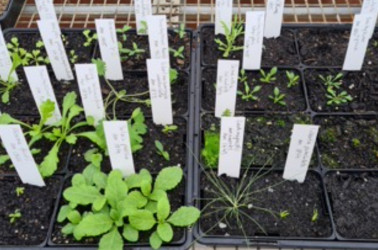
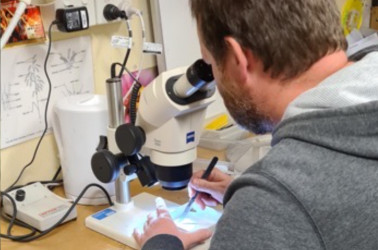
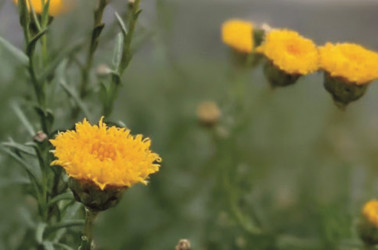
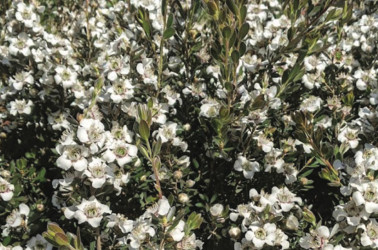
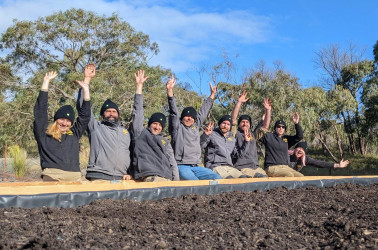
Follow our cause in saving Australia's endangered wildlife, and receive newsletter updates on the Raising Rarity - Stages 1 & 2 and other projects and successes.



